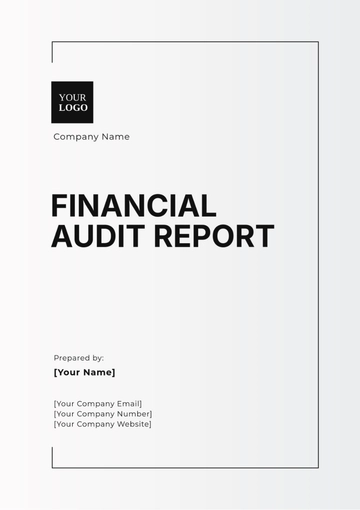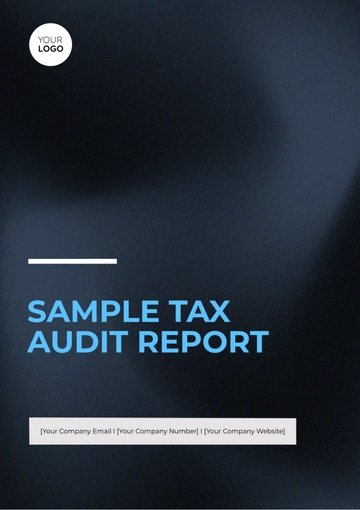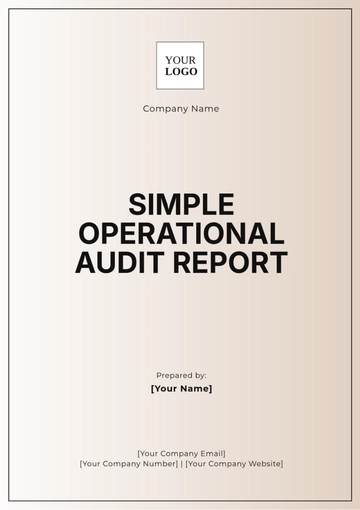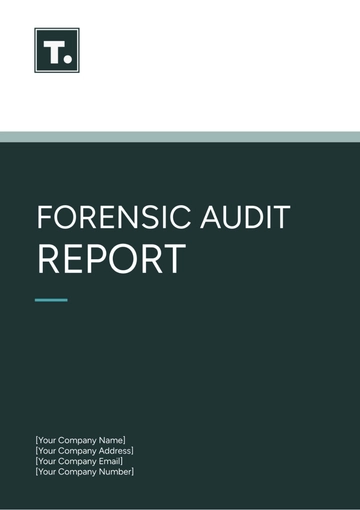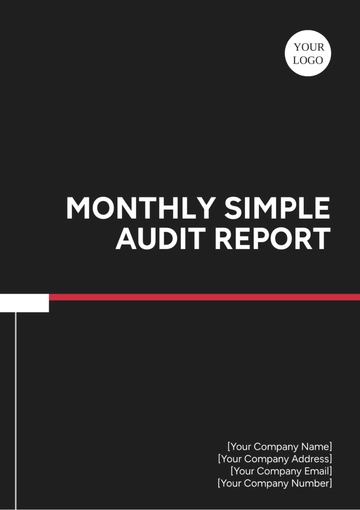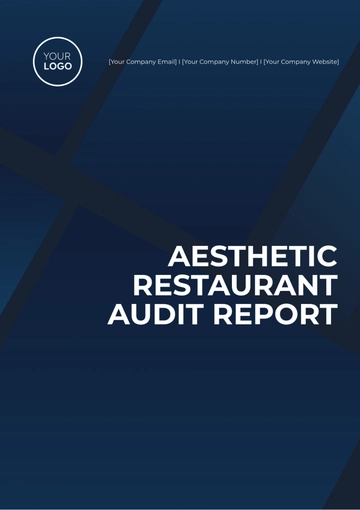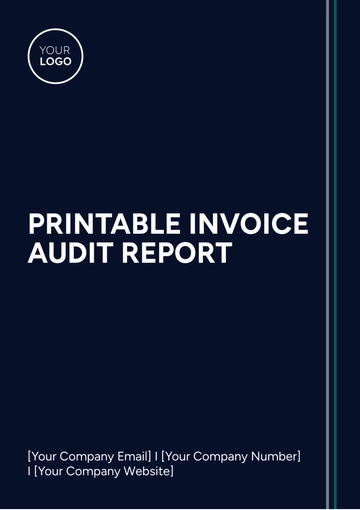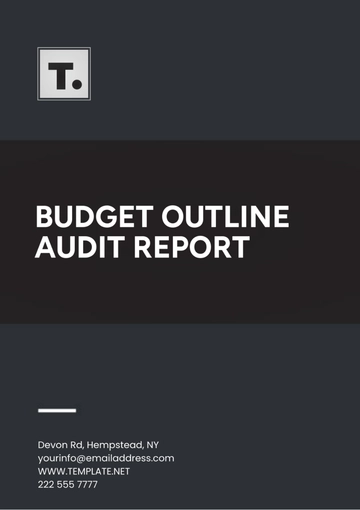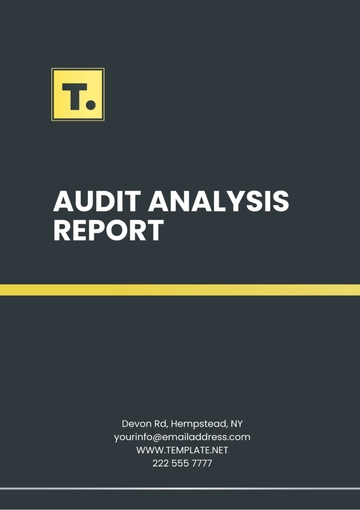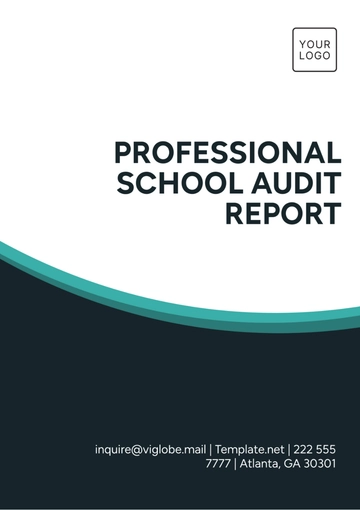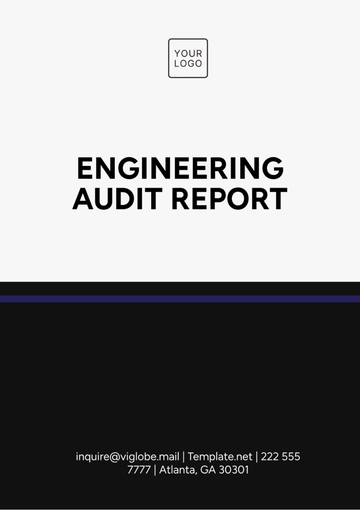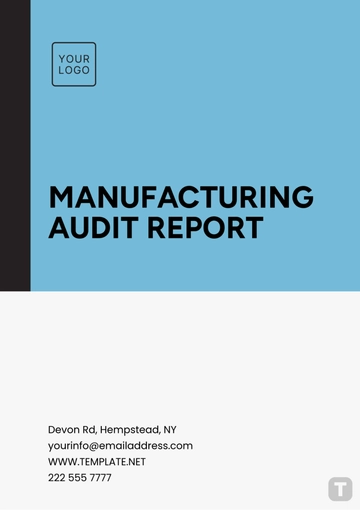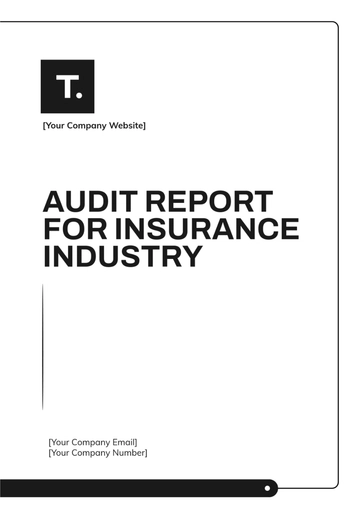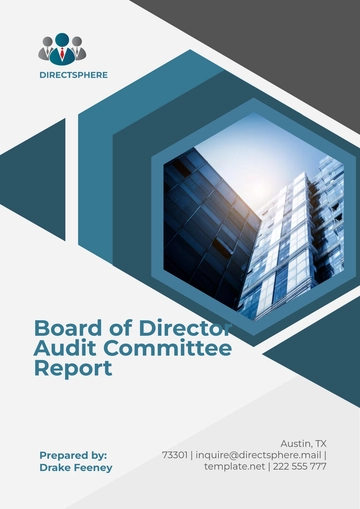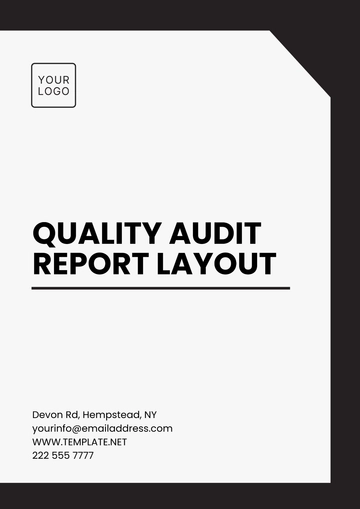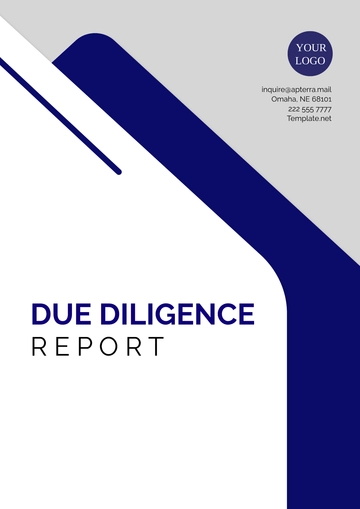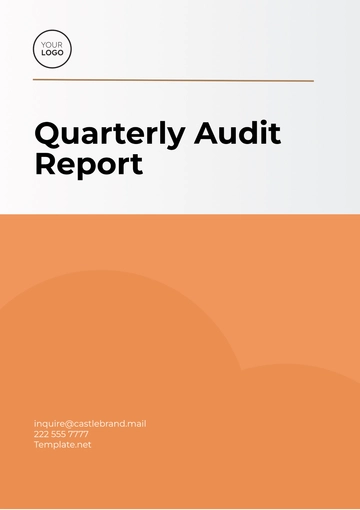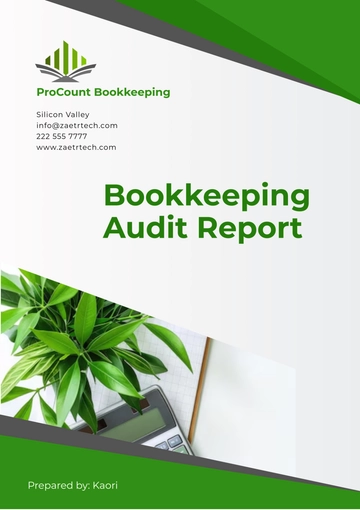Free Startup Operational Efficiency Audit Report
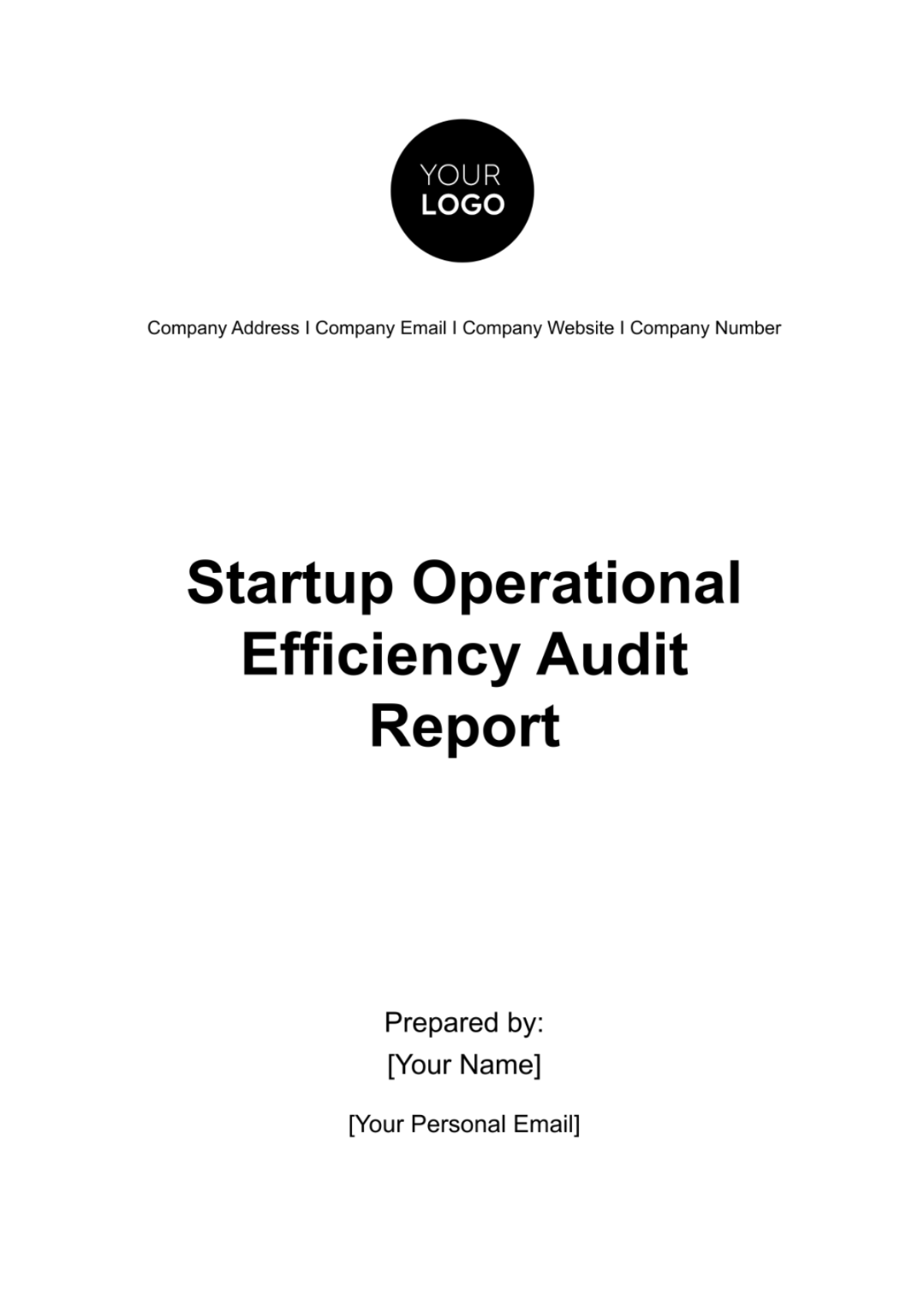
I. Executive Summary
The Operational Efficiency Audit conducted for [Your Company Name] has revealed significant opportunities for enhancing productivity, reducing operational costs, and streamlining processes across various departments. Our comprehensive analysis identifies key areas where strategic improvements can lead to substantial gains in overall efficiency and competitive advantage.
Implementing the recommended changes could result in a marked improvement in operational workflows, cost savings of up to [20]% in key operational areas, and enhanced employee productivity. These enhancements are expected to drive better customer satisfaction and foster a more agile, responsive organizational structure.
II. Audit Scope and Objectives
The scope of this audit encompasses a thorough examination of [Your Company Name]'s core operational areas, including supply chain management, technology and systems infrastructure, human resources processes, and financial performance. Specific attention was directed towards identifying inefficiencies in workflow processes, evaluating the effectiveness of current technological tools, assessing workforce optimization, and analyzing cost management strategies within these segments.
The primary objectives of this audit were to identify opportunities for operational improvements, recommend strategies to enhance efficiency and reduce costs, and evaluate the alignment of operational activities with the company's strategic goals. By achieving these objectives, the audit aims to provide [Your Company Name] with actionable insights that can lead to significant enhancements in operational performance, thereby improving profitability and competitive positioning in the market.
III. Methodology
To ensure a comprehensive evaluation of [Your Company Name]'s operational efficiency, our audit methodology incorporated both advanced data analysis tools and traditional auditing techniques. This dual approach allowed for a thorough examination of operational processes, technology usage, financial management, and human resources practices.
Data Analysis Tools: Utilized to parse large datasets, identify trends, and highlight inefficiencies within operational workflows and financial transactions.
Traditional Auditing Methods: Included interviews with key personnel, observation of operational processes, and review of policy and procedure documentation.
Parameters for evaluation were meticulously defined to align with industry best practices, focusing on process efficiency, cost management, technology optimization, and workforce productivity. This methodology provided a balanced, in-depth perspective on [Your Company Name]'s operational strengths and areas for improvement.
IV. Operational Process Analysis
Our detailed analysis of [Your Company Name]'s core operational processes revealed critical insights into production, delivery, and support services. This examination aimed to enhance the startup's efficiency and service quality.
Production: Identified bottlenecks in the manufacturing workflow, including delays in supply chain logistics and inefficiencies in resource allocation.
Delivery: Highlighted redundancies in the delivery process, suggesting optimization of routing and scheduling to improve timeliness and reduce operational costs.
Support Services: Pinpointed areas where customer service can be streamlined through better integration of technology and training, enhancing response times and customer satisfaction.
Recommendations for process improvement focus on leveraging technology to automate repetitive tasks, reevaluating supplier contracts to address supply chain delays, and implementing training programs to elevate the proficiency of support staff.
V. Technology and Systems Review
The review of [Your Company Name]'s technology and systems infrastructure highlighted outdated software and underutilized IT resources. Upgrading to more current technologies and adopting cloud-based solutions are recommended to enhance data management and operational efficiency. Streamlining IT processes through automation and integration can significantly reduce manual labor and minimize errors, fostering a more agile and responsive operational environment.
VI. Human Resources and Staffing
Our assessment of [Your Company Name]'s Human Resources and Staffing has revealed critical insights into the alignment of staffing levels, skills, and competencies with the operational needs of the startup. The table below summarizes our findings and recommendations for optimizing the workforce to better meet current and future operational demands.
Area Evaluated | Findings | Recommendations |
|---|---|---|
Staffing Levels | Current staffing levels do not meet the demands in key operational areas. | Increase hiring in under-staffed departments to alleviate workload and improve efficiency. |
Skills and Competencies | A gap in specific skill sets critical for operational efficiency. | Implement targeted training programs and consider hiring specialists in areas lacking expertise. |
Organizational Structure | The current structure impedes communication and workflow efficiency. | Restructure teams to enhance collaboration and streamline processes. |
VII. Financial Performance Analysis
The Financial Performance Analysis of [Your Company Name] meticulously examines the startup's financial data to evaluate cost efficiency across various departments. By identifying specific areas where cost reductions are feasible without sacrificing quality or productivity, we aim to enhance financial health and operational effectiveness. Below, the "Operational Cost Distribution by Department" bar graph illustrates the proportional spending across key operational areas, highlighting potential targets for cost optimization.
VIII. Compliance and Risk Management
Our assessment of the startup's regulatory compliance and risk management practices reveals an adherence to legal requirements. However, potential risks in terms of policies and procedures are spotted, which should be addressed to mitigate damage.
IX. Supply Chain and Vendor Management
Our analysis of [Your Company Name]'s supply chain and vendor management practices has pinpointed several key areas where improvements can drive cost savings and enhance overall efficiency.
Vendor Relationships: Assessment reveals potential for renegotiating contracts for better terms, leveraging bulk purchase discounts, and exploring multi-year agreements for stability and cost predictability.
Supply Chain Integration: Opportunities identified for integrating supply chain operations with technology platforms to improve visibility, streamline inventory management, and reduce lead times.
Cost Savings: Strategic sourcing and adopting just-in-time inventory practices can significantly reduce holding costs and minimize waste, contributing to a leaner operational model.
X. Action Plan and Recommendations
In the short term, [Your Company Name] should prioritize initiatives that yield immediate improvements in operational efficiency. This includes upgrading outdated technology systems, implementing staff training programs, and renegotiating terms with key suppliers. Responsibility for these actions will be assigned to department heads, with completion targeted within the next quarter. These steps are designed to quickly enhance productivity and reduce operational costs.
For the long-term strategy, [Your Company Name] will focus on restructuring the organizational hierarchy, integrating advanced data analytics for better decision-making, and establishing a continuous improvement framework. These initiatives, led by senior management with cross-departmental collaboration, aim to sustain operational excellence and adaptability. A timeline of [12 to 18 months] is anticipated for the full implementation of these comprehensive changes, ensuring [Your Company Name]'s competitive edge and operational sustainability.
- 100% Customizable, free editor
- Access 1 Million+ Templates, photo’s & graphics
- Download or share as a template
- Click and replace photos, graphics, text, backgrounds
- Resize, crop, AI write & more
- Access advanced editor
Optimize your startup's performance with the Startup Operational Efficiency Audit Report Template from Template.net. This template is the key to unlocking enhanced operational efficiency, offering editable and customizable features for a tailored audit process. Perfectly compatible with our Ai Editor Tool, it empowers you to conduct thorough efficiency audits with ease.
You may also like
- Sales Report
- Daily Report
- Project Report
- Business Report
- Weekly Report
- Incident Report
- Annual Report
- Report Layout
- Report Design
- Progress Report
- Marketing Report
- Company Report
- Monthly Report
- Audit Report
- Status Report
- School Report
- Reports Hr
- Management Report
- Project Status Report
- Handover Report
- Health And Safety Report
- Restaurant Report
- Construction Report
- Research Report
- Evaluation Report
- Investigation Report
- Employee Report
- Advertising Report
- Weekly Status Report
- Project Management Report
- Finance Report
- Service Report
- Technical Report
- Meeting Report
- Quarterly Report
- Inspection Report
- Medical Report
- Test Report
- Summary Report
- Inventory Report
- Valuation Report
- Operations Report
- Payroll Report
- Training Report
- Job Report
- Case Report
- Performance Report
- Board Report
- Internal Audit Report
- Student Report
- Monthly Management Report
- Small Business Report
- Accident Report
- Call Center Report
- Activity Report
- IT and Software Report
- Internship Report
- Visit Report
- Product Report
- Book Report
- Property Report
- Recruitment Report
- University Report
- Event Report
- SEO Report
- Conference Report
- Narrative Report
- Nursing Home Report
- Preschool Report
- Call Report
- Customer Report
- Employee Incident Report
- Accomplishment Report
- Social Media Report
- Work From Home Report
- Security Report
- Damage Report
- Quality Report
- Internal Report
- Nurse Report
- Real Estate Report
- Hotel Report
- Equipment Report
- Credit Report
- Field Report
- Non Profit Report
- Maintenance Report
- News Report
- Survey Report
- Executive Report
- Law Firm Report
- Advertising Agency Report
- Interior Design Report
- Travel Agency Report
- Stock Report
- Salon Report
- Bug Report
- Workplace Report
- Action Report
- Investor Report
- Cleaning Services Report
- Consulting Report
- Freelancer Report
- Site Visit Report
- Trip Report
- Classroom Observation Report
- Vehicle Report
- Final Report
- Software Report

